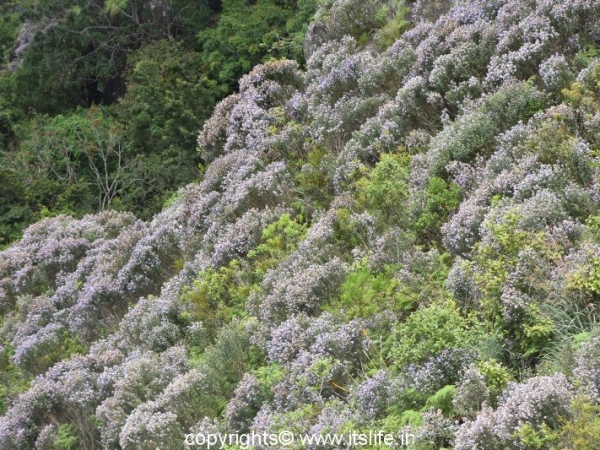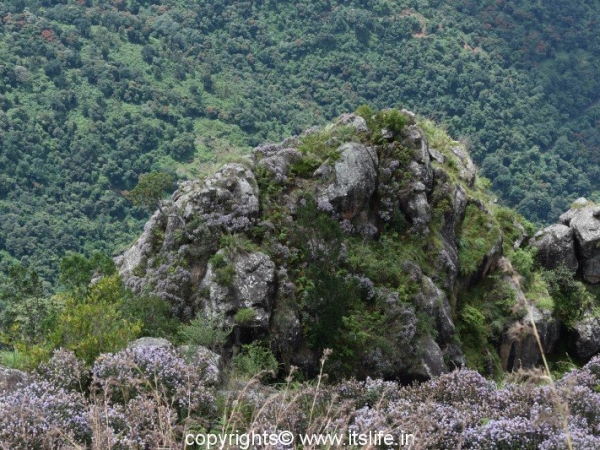I missed seeing Neelakurinji in bloom in 2006 and vowed to travel to the land of Neelakurinji flowers in 2018 and I am delighted to share that I just returned from seeing the purplish blue carpeted hills in the Nilgiris. It was just out of this world experience and any doubts of the existence of god disappears in a jiffy at the sight. It is as though god’s wand has touched that part of the Nilgiri biosphere to change into a wonderland. The Nilgiris (blue mountains) got its name from this flowering plan!
Neelakurinji is also known as Kurinji or Kurunji. Botanical name is Strobilanthes kunthianus and belongs to Acanthaceae (Acanthus) family.
The shrub grows up to 6 to 12 feet at an altitude of 6,000 to 7,000 feet on the hill slopes of the Western Ghats.
The shrub is bushy and grows in full sunlight on grasslands and rocks. You will rarely find them inside thick forests.
The leaves are 6 by 3 cms long, elliptic, and rough like sand paper. I got a chance to touch the leaves at the hotel where there was A vase full of Kurinji flower stalks.
The flowers bloom on spikes that are 3 to 5 cm long. They are purplish blue, hairy, and bell-shaped. The flowers are 2.5 cm long.
The Paliyan tribal people of the Nilgiris used to calculate their age with the blooming of the Kurinji flowers.
The genus has around 250 species and 46 species are found in India with a blooming cycle of annual to 12 year.
Apart from Nilgiri hills, they are seen in bloom in Sandur Hills in Bellary district, Shevroys in the Easter Ghats, Anamalai Hills in Idukki, and Agali hills in Palakad.
Kurinjimala Sanctuary protects the Kurinji plants in approximately 32 km² in Kottakamboor and Vattavada villages in Idukki district of Kerala. The “Save Kurinji Campaign Council” organizes campaigns and programs for conservation of the Kurinji plant and its habitat.
Kurinji Andavar temple located in Kodaikanal is dedicated to Hindu God Kartikeya and preserves the Strobilanthes plants.
The Kurinji plant is displayed in Ooty Botanical gardens. The Kurinji Honey is believed to have medicinal properties and unique in taste.
There is an urgent need to conserve this beautiful plant as they are disappearing due to climate change and massive land development for commercial use.




